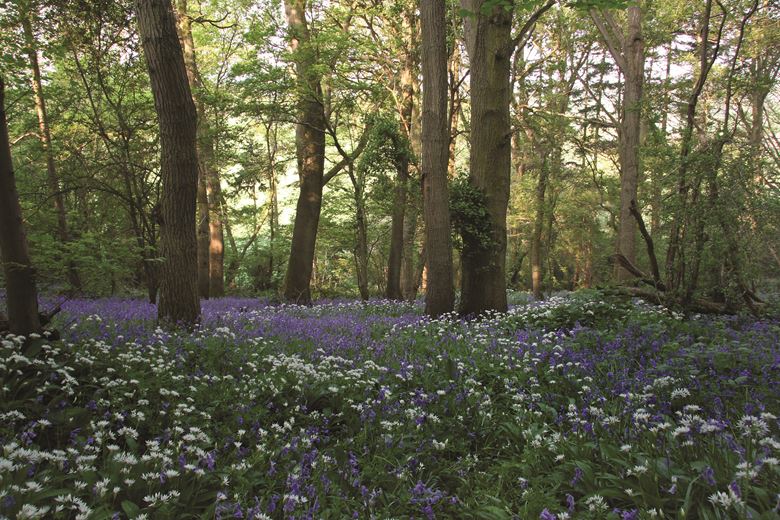Biodiversity net gain as a concept has its roots in the National Planning Policy Framework, and also features in the Environment Act. It’s closely linked with the idea of natural capital, but has a more solid link with private-sector income generation than many other natural capital schemes.
What is biodiversity net gain?The biodiversity net gain (BNG) requirement means that any new development will need to not only leave biodiversity in as a good a state as it was before the development – it will actually need to be improved by 10%.
Depending on the site prior to development, the steps that would need to be taken to achieve this 10% uplift will vary significantly. A site with relatively low biodiversity (for example if it has previously been arable farmland) that is being developed into low-density housing will likely be able to reach the threshold through open spaces, gardens, trees, shrubs and water bodies on the development itself.
On the other hand, where land is at premium and therefore more densely developed, or where the site starts with a higher level of biodiversity, this may stop the development being financially viable, or indeed possible.
What opportunities does biodiversity net gain offer to farmers and landowners?
Where it is not possible to achieve the required uplift on site, a developer can partner with a local farmer or landowner, who can implement measures on their land to increase biodiversity by the required amount, and receive a payment from the developer for doing so.
There will be instances where even this is not possible or feasible, leading to a final option available to developers which is to pay into a fund, which would be used for large-scale, nationally significant schemes. There is also likely to be opportunities here for some farmers and landowners – particularly those with larger areas of land that they’re willing to put into biodiversity schemes, or those willing to collaborate with neighbours.
What should farmers and landowners do to get involved in biodiversity net gain?
If you’re interested in getting involved in a biodiversity net gain project, the first thing you’ll need to do is get an expert like Carter Jonas to assess approximately what level of uplift could be achieved on the land in question.
Armed with this information, your adviser will then be able to match you with a developer who needs to achieve an equivalent uplift outside their development site.
What is the value of land used for biodiversity net gain?
Currently, the sum paid for taking land out of production and putting it into biodiversity is to be negotiated on the open market, and there are no guidelines as to appropriate values.
It’s also up to the farmer/landowner and the developer to agree payment terms – for example, a one-off payment or a regular payment, with the former being more suitable where there might be upfront costs for implementing the measures needed to achieve the 10% uplift. Or a combination might be more appropriate.
It is, however, likely that you will receive more from a biodiversity net gain project than you would from conventional farming.
The term of the agreement is also to be agreed between the two parties, but will most likely be a minimum of 30 years. Given this length of time it’s worth considering what opportunities might reasonably arise during that period that you would miss out on if your land is tied up in such a scheme. It is always worth seeking expert advice before entering into any agreement to ensure that you’re getting a good financial deal, and that the agreement fits with your wider vision for the future of your farm or estate.
Are there any other benefits?
Biodiversity net gain can be seen as a form of diversification – and one of its great appeals to farmers and landowners is that it’s an income stream that’s rooted in land stewardship, that’s relatively long term and resilient.
You may also find that some of the measures implemented in order to achieve the uplift can have knock-on benefits for some of the other income streams on your farm or estate – for example taking land out of production and planting trees may improve the first impression for a visitor to a public-facing enterprise such as a wedding venue.
Are there any downsides?
Aside from some of the risks and other considerations already outlined, you should also seek expert advice on the impact that a biodiversity net gain agreement would have on your inheritance tax liabilities.
If you’re interested in finding out more about whether biodiversity net gain would be a suitable project for your farm or estate, contact Mark Russell or your local Carter Jonas office.
Mark Russell
07967 555737
mark.russell@carterjonas.co.uk
@
Get in touch
Mark heads up the Rural team for the East, focusing on rural agency, professional and estate management instructions. Mark also leads on Natural Capital, currently focusing on BNG and Carbon Capture advice. He has over 25 years of rural property experience involving the management of rural estates, sale and purchase of farmland and valuations.
Latest news
- DEFRA has today opened the Improving Farm Productivity grant
- Carter Jonas Reports Half Year Results for 2020
- Carter Jonas Strengthens Rural South West Team With Senior Appointment
- Battery Energy Storage
- Carter Jonas signs-up to Time to Change initiative
- Raft of Promotions at Carter Jonas
- Carter Jonas Achieves Gold Investors In People Accreditation
- Newbury Straw Sale met with Selective Trade as Spring Approaches
- Newbury Straw Sale met with buoyant trade



